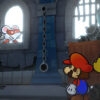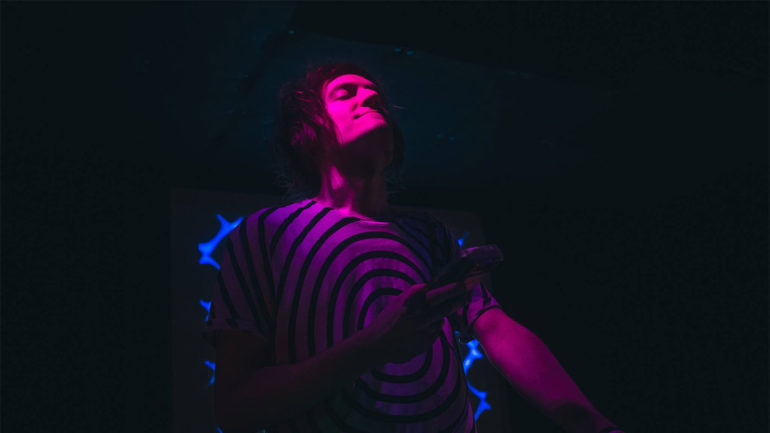It wasn’t until a live concert at the very first EB Expo, back in 2011 at the Gold Coast Convention and Exhibition Centre, that I became acutely aware of what would be considered “contemporary” chiptune music. Although I’m old enough to remember a time before the advent of CD-ROM, where recorded audio was a pipe dream and the composers making music for video games were all working within the confines of primitive audio hardware, this was different. Watching these musicians on stage using a combination of hacked Nintendo Game Boys and more mainstream live instruments to produce catchy, genre-spanning tunes to an amped crowd opened my eyes to a whole new world, one that I’ve continued to enjoy since.
Fast-forward to 2022 and one of the albums that’s getting the most play on my Spotify account is a little joint titled In, Vulnerable by Melbourne chiptune artist, Calavera. While the depth and breadth of style, genre, hardware and software of chiptune means that there’s no single way to do it, the tight beats, layered instrumentation and more contemporary tempos of In, Vulnerable instantly take me back to that live show in 2011. As a casual chiptune enjoyer, it feels like a gateway to a scene I’ve always found myself drawn to but unsure of or perhaps intimidated by. It’s the kind of record I’d show to someone to illustrate exactly what it is I enjoy about the style, which is why I was incredibly excited to chat with Calavera about getting his start in chiptune, the evolution of his style and the local scene here in Melbourne.
Calavera has spent the last 10 years “convincing ancient video game machines to make sounds they were never intended to”, but like many of us an early appreciation for the hardware-bound sounds of early video games was the basis for a fondness of the modern idea of chip music, even if one didn’t lead directly to the other.
“In the late 80s/early 90s my family got an Amiga 500, which was an early home computer that was way ahead of its time. My dad thought he’d use it for work, but after acquiring a box of games on floppy disk it quickly became almost entirely a video game machine. On those disks was amazingly crafted tracker music that served as the soundtracks to those games, and I remember even as a really young boy of five or six being captivated by the sounds.
“Back then it wasn’t ‘chiptune’ it was just ‘current electronic music’ and it wasn’t until my early 20s that I really became aware of the phrase after searching ‘8 bit music’ one day and finding 8bitpeoples.com, a netlabel that has some of the most classic albums of chip ever made. I was in love. It was so versatile! It sounded like my childhood! There was poppy chiptune, reggae chiptune, heavy banger-y chiptune. It was like a box of chocolates where every flavour was a first time experience”, describes Calavera with a phrase that I’ll probably never have the context to use myself but would absolutely love to.
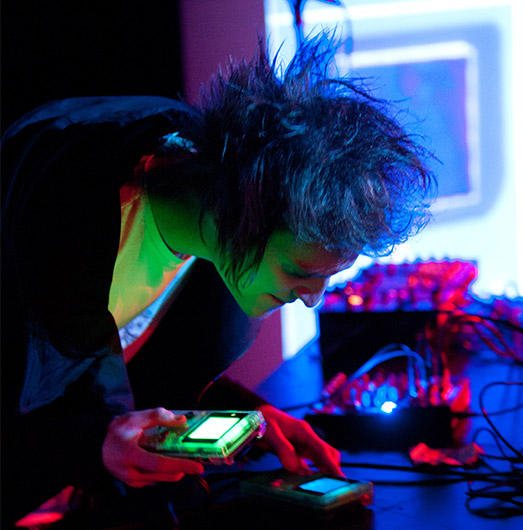
“Then fast forward a couple of years to mid 2012, there was a ‘Game Masters’ exhibition at ACMI and inside of that, my soon-to-be-friends had organised a chiptune workshop where they were teaching people how to make music on an original Nintendo Game Boy. At this point I had dabbled a tiny bit in Game Boy music, having tried it through an emulator (and hated it), but as soon as I sat down at those tables in ACMI and picked up that solid original Game Boy brick something just clicked and I fell in love with the method and the portability – especially when I was having the honour of being taught by who I would soon realise were some of the best chip musicians in the world.”
While the more contemporary idea of chiptune music, the stuff you’re likely to hear from artists like Calavera and see at live shows, is a constantly shifting and evolving beast that’s far removed from the simplistic tones emanating from an 80s arcade machine it’s largely still borne of the same constraints. It’s these intentional circumstances that make chiptune what it is after all, though what it is beyond that is completely up to the person wielding it.
It’s so much more than video game music. That’s obviously a part of it, but it’s such a beautiful, expansive way of connecting the past and present together via sound
“What makes chiptune special is technically it’s not even a genre, it’s more of a method of music production in the way that ‘guitar’ isn’t a genre. You can make any genre of music within the confines of chiptune, as long as it’s made on, or emulates the sound of old video game machines, the rest is up to you.
“One thing that sets it apart are the limitations. When music is made on, say, a Game Boy – that machine was never designed to create just music, it was made to entertain (with a little bit of sound in the background). So suddenly you have these sets of constraints to your music making method, for example, the Game Boy can make four types of sound at any one moment, like a pianist with only four fingers. Two of those fingers can make very rudimentary bleeps, one finger can make slightly higher fidelity sound (and even do very low quality samples if you’re crafty) and the last finger can produce only white noise. So as you can imagine, you have to learn to become very creative in the way you lay your musical ideas out, and at high levels, musicians need to learn ways of making it sound as if there are more sounds being made at any one point then there actually is. It’s more like a magic trick using sleight of hand, except it’s for your ears.
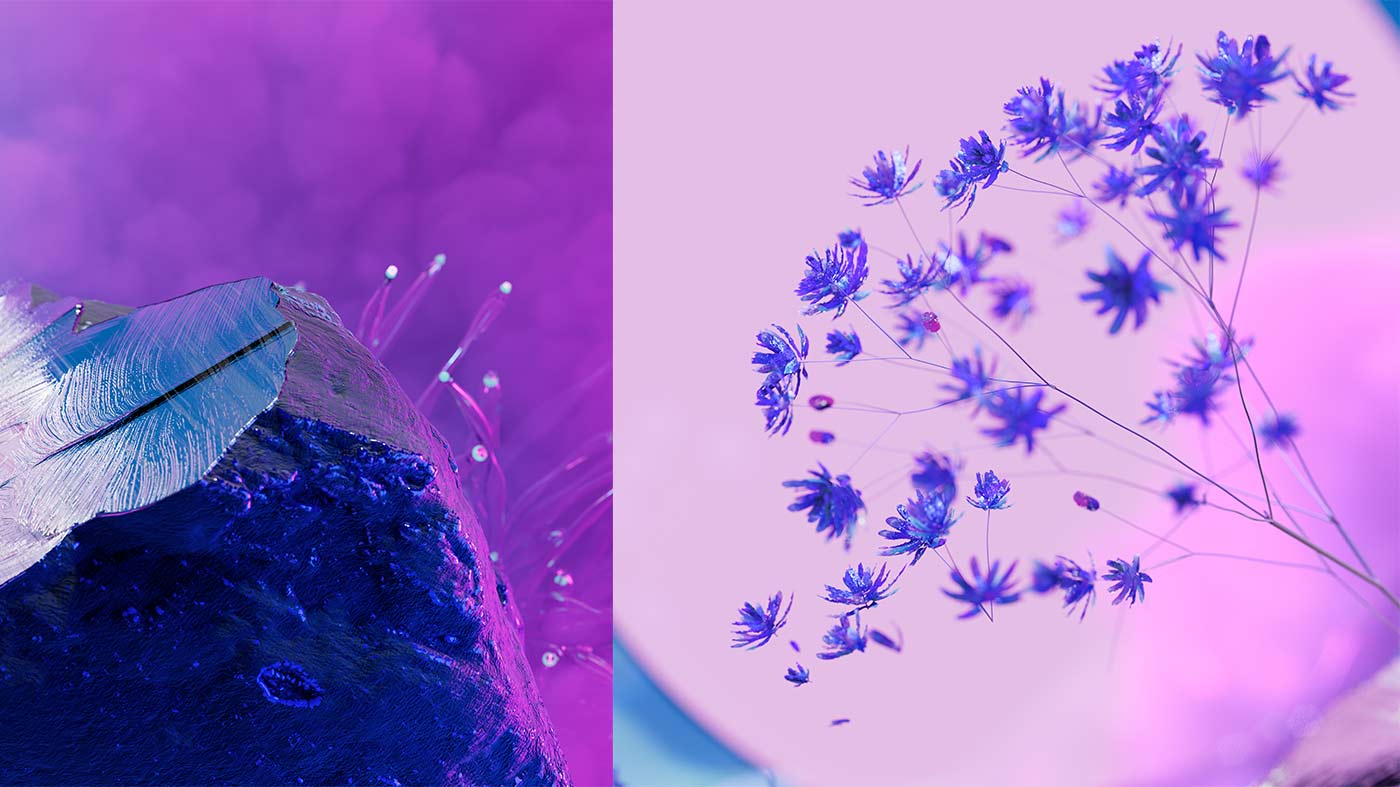
When 2020 rolled around, I was a bit burned out. Eight years of violently pushing against the limitation of the Game Boy had run its course and I was looking for a way to expand my sound, try something new.
“Even music that simply emulates or incorporates that era of sound is very unique too, as it can mix the power of modern electronic music with the nostalgia and limitation of yesteryear.”
Of course, like any musical style or instrument, things evolve over time and the same can be said of chiptune – especially when it comes to the technology making it happen. While there most certainly would be purists and old heads in the scene when it comes to hardware and methodology, as much as any other scene, it’s an evolution that brought Calavera out of something of a slump and led to the creation of In, Vulnerable.
“Up until 2020 I made all my music exclusively on a single, original Nintendo Game Boy from 1989 [with] four channels of sound. This was achieved with the help of a flash cartridge with a ROM of the musical tracker software LSDj.”
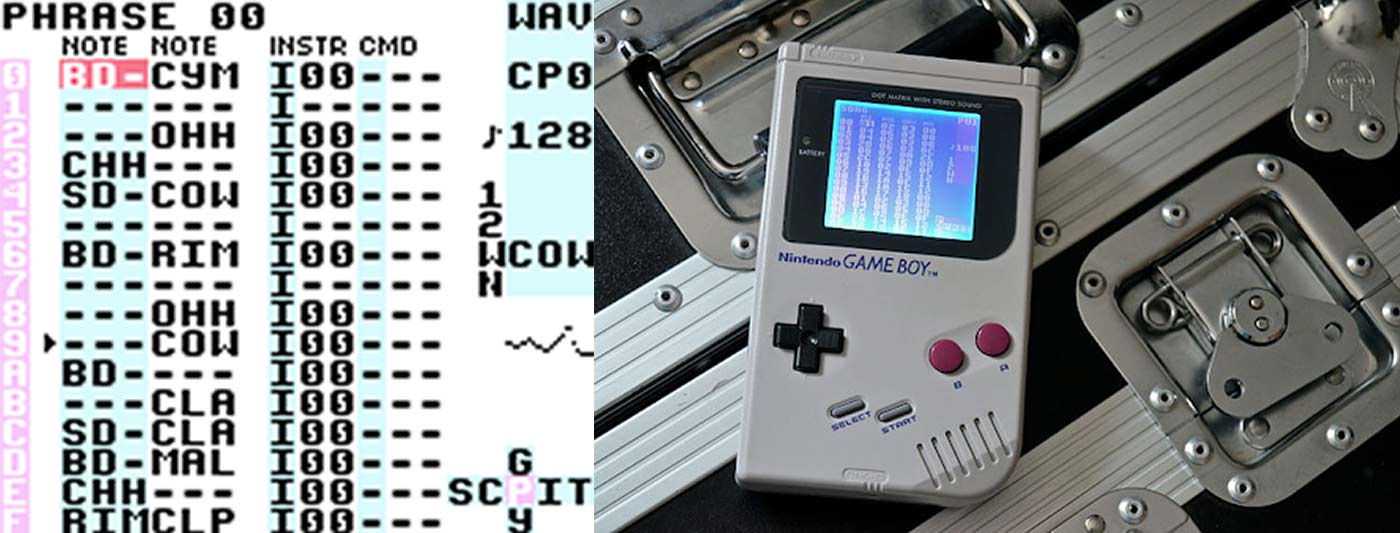
“With this piece of kit I could create little sounds and synths, make them play notes, arpeggios, create kickdrums out of nothing but basic waveforms, mimic the sounds of snares and high hats with curated white noise. It’s a real wild ride. Like learning how to create the strings and then build the whole piano before learning to write music on it.
“When 2020 rolled around, I was a bit burned out. Eight years of violently pushing against the limitation of the Game Boy had run its course and I was looking for a way to expand my sound, try something new.
Then came the Dirtywave M8.”
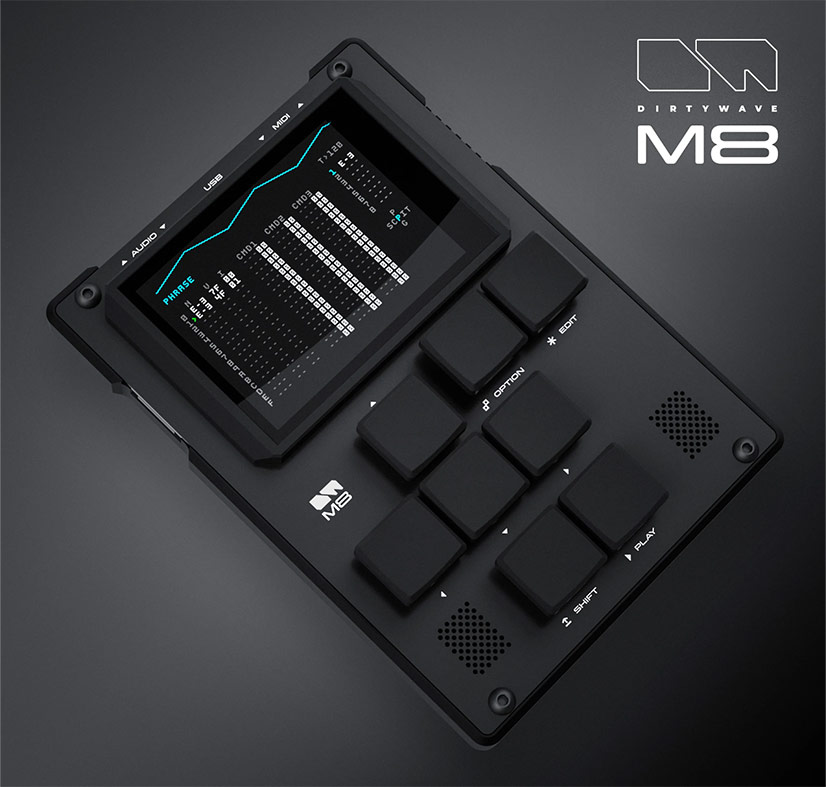
“This thing was created by one of the most beloved names in chiptune, Trash80 (who I had discovered on 8bitpeoples.com a million years prior). He was a musician always trying to push boundaries, so he created his own device based off the method of creating music on a Game Boy, but hugely better. It uses the same layout, UI, methodology but not only has eight channels (instead of four) but can incorporate modern synthesis and sampling (and MIDI) right out of the gate. It’s like having two Game Boys, a laptop and a backpack full of synths in the palm of your hand – it’s absolutely mental. And was precisely what I needed, exactly when I needed it.
“This thing delivered in the biggest way for me, and it took me out of a multi-year slump and catapulted me into creating what would become my latest album ‘In, Vulnerable’. I found it to be the perfect balance between traditional chiptune limitation (which breeds creativity) and the ability to spice it up with some bigger sounds. I cannot sing the praises of this thing enough, and could easily talk about it for the rest of the evening.”
And although the Dirtywave M8 is largely responsible for how In, Vulnerable sounds, taking Calavera’s prior eight years of experience with the Game Boy and elevating and modernising it, the record itself is a product and a chronicling of his experiences through the COVID-19 pandemic. It’s an experience that Melbourne musicians are acutely aware of with those years seeing multiple, extended lockdowns that have caused significant and very visible setbacks in the local arts sector with the shuttering of local events.
Events like Square Sounds, a yearly celebration of chiptune in Melbourne that had become one of the Southern Hemisphere’s biggest and something that Calavera credits as helping to establish him in the world of chip music and forge lifelong friendships and connections around the globe.
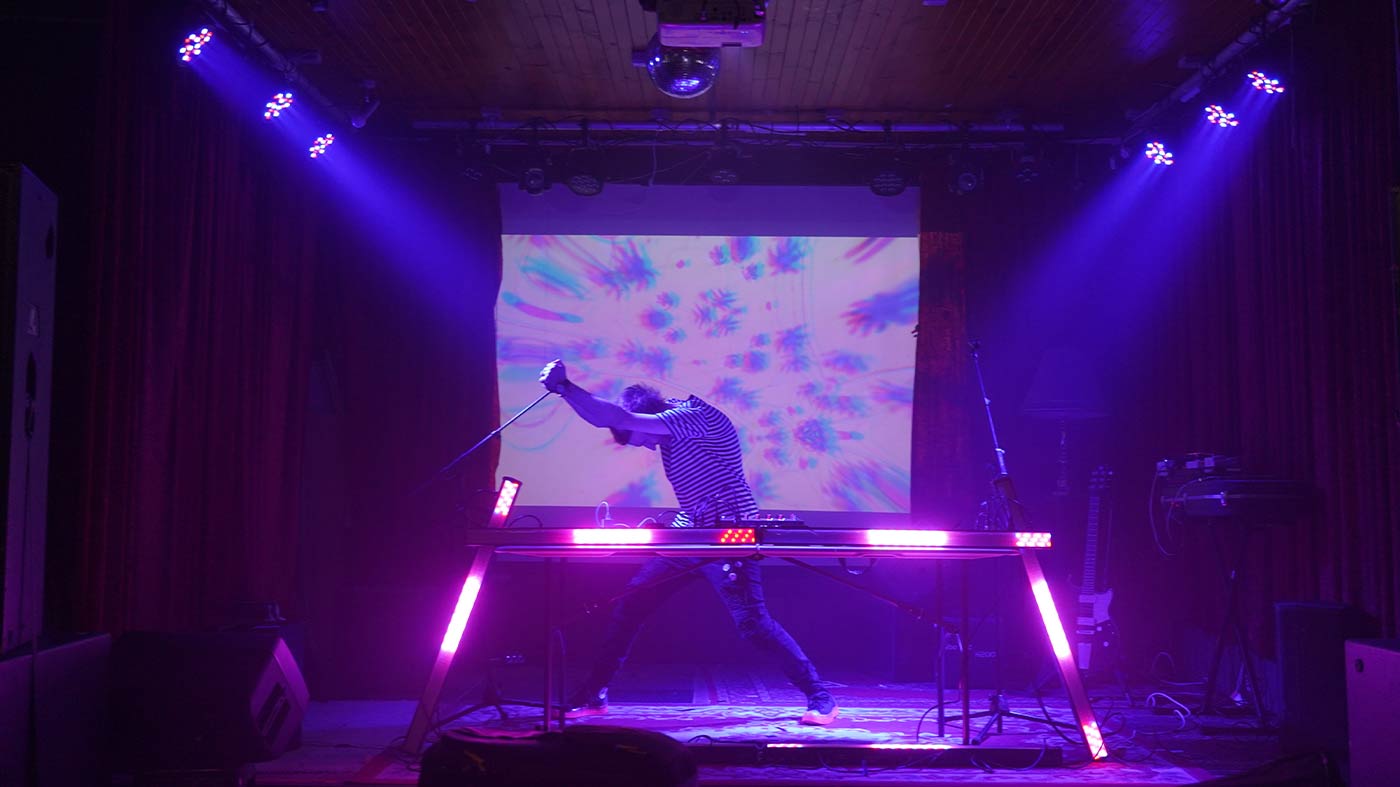
“[It] was my very first show, the open mic night of Square Sounds 2013. I was terrified, I hadn’t eaten or slept properly in weeks, I wrote some terrible songs on a Game Boy, played it to a small bar of open-minded individuals, and when I was done and coming down off that little stage, one of the organisers of the show came up to me, shook my hand and with a smile said “That was amazing, welcome to the family, man!” We’d never met, and he wasn’t joking – over the next few years I was welcomed into this beautiful, inclusive, positive gaggle of eclectic musicians who just love to geek out over niche music and archaic technology.
“It wasn’t the main reason, but the pandemic certainly didn’t help the sunsetting of Square Sounds. All of us have ‘real jobs’ so no one was really financially destroyed during those first couple of pandemic years where gigs were very rare, but of course it took a mental and emotional toll on us like it did most other people. We lost our outlet. We lost our way of connecting with fans, meeting old and new friends, our way of introducing chiptune to new people and watching their faces light up. It sucked, but things are looking much brighter recently.”
Things look a little different in a post-lockdown world then, but much like their ability to extract a multiplicity of sounds from the guts of ageing technology, those in the scene are making the most out of what they’ve got.
“These days without a central hub, we’re a bit more scattered but we’re all still out here making music and pushing boundaries, so we seem to take it in turns now to organise smaller shows and get the scene back together semi-regularly. It’s still so great, and I’m still so grateful for it.”
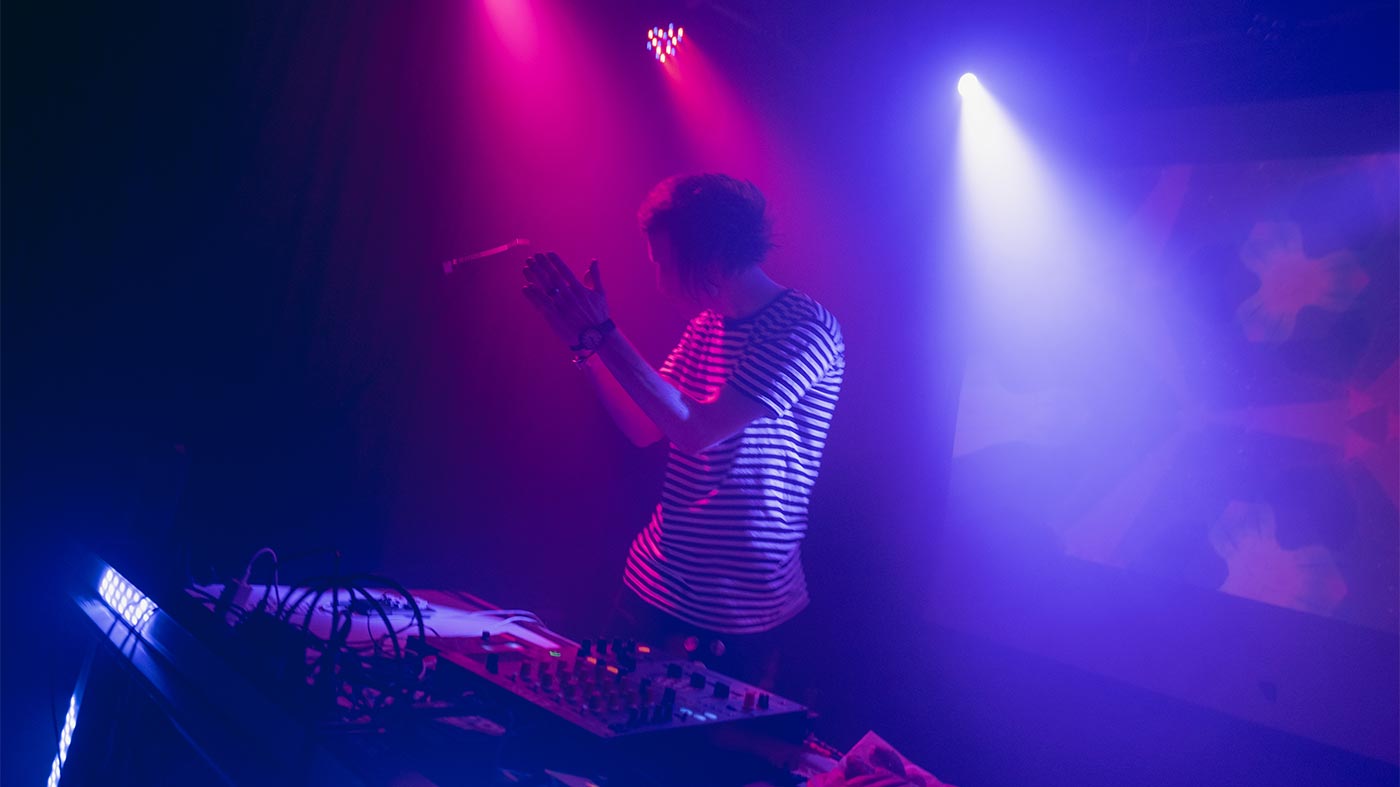
“We are hugely blessed in Melbourne and in Australia with some insanely talented chipmusicans – and wildly varied too! Heavy dancefloor bangers, catchy 80s funkiness, spicy reggae, avant-garde genre-detesting chaos, poppy anthemic Game Boy/guitar hybrids and emotional electronic wistfulness just to name a few off the top of my head.”
It’s that idea of connection and community in chiptune that really hadn’t become as apparent to me until I saw that first live show at EB Expo, and it’s something I would urge anyone with even a passing interest in video game music (or music in general) to experience for themselves. Not least because of the sheer scope of variety of genres and atmosphere between events, artists or even individual shows. So what’s a Calavera show like?
“A lot of chiptune is very high tempo, high pitched mania, which is great – but what interests me personally is creating a different take on that, slow or mid-tempo, heartfelt or heavy, when you come to my show I want you to feel something more than mania, something a little deeper. Ideally it would be a healthy mix of positive and negative emotions, as neither is anything without the other. I love swingy grooves, arabic-inspired melodies and heavy basslines. I love to jump like an orangutan through the jungle vines of genre. You’ll find all that stuff at my live show.
“Looking out across a sea of smiling faces while I’m up on a stage pouring out my musical soul is honestly one of the most rewarding, life-affirming feelings I get to experience. There’s nothing like it. Vulnerability and affirmation seamlessly intertwining to the steady beat of a kick drum is just pure magic.”
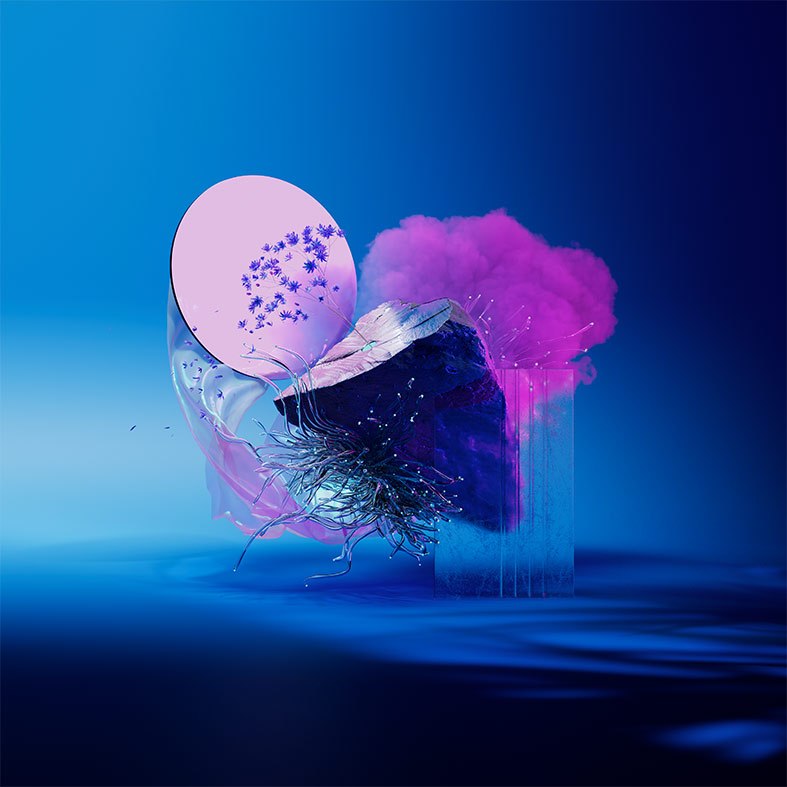
With the scene starting to find its footing again as live shows kick back into gear, including a few where you can catch Calavera doing his thing (details at the bottom), the future is ripe with possibilities. But what’s next for local chiptune and this artist in particular?
“I see more intimate shows and recurring events rising up around the place, I see new friends and fans coming into the family, learning new skills and ways of expressing themselves. For me I have so many more ideas and avenues I want to explore with the M8, I want to continue pushing musical boundaries with it and create more solid emotional connections in the form of songs that live on well after we’re just dust in a casket. I’ve also got some potentially very exciting news I can’t talk about yet, so stay tuned!”
Of course the future belongs to more than just those already doing it, and Calavera reckons that humble beginnings are the best way to get a taste for and a start in producing chiptune music if you find yourself inclined.
“Start with something fairly simple, like LSDj on a Game Boy. The barrier to entry is pretty low, as you can get a beat up garage sale Game Boy for $5 like I did, a flash cart for $100-150 online and the software to put on it for the cost of a donation. After that, YouTube has plenty of great tutorials to get you going. And who knows, perhaps it will lead you to meet some of your new best friends in the process.
“It’s so much more than video game music. That’s obviously a part of it, but it’s such a beautiful, expansive way of connecting the past and present together via sound. You can create nostalgia for memories you never even had.”
Keen to know more or just immerse yourself in chiptune in the best possible way? Calavera has a show coming up with two of the artists he attributes to his start in the scene, cTrix and Dot.AY, this week!
They’ll be taking over the normal synthwave goodness of Laser Highway at Loop Bar in the Melbourne CBD on Sat, Oct 8th from 9PM – conveniently the night after day two of PAX Aus 2022. Check out all the event details below:
You can connect with Calavera and listen to the new album, In, Vulnerable, in a multitude of ways:
Spotify: https://open.spotify.com/album/18a9qjkkW4EUCv29i8doM1?si=u_WkP_HJTiez0KZEskn5-Q
Bandcamp: https://calaveralovesyou.bandcamp.com/album/in-vulnerable
Social media: https://beacons.ai/calavera
